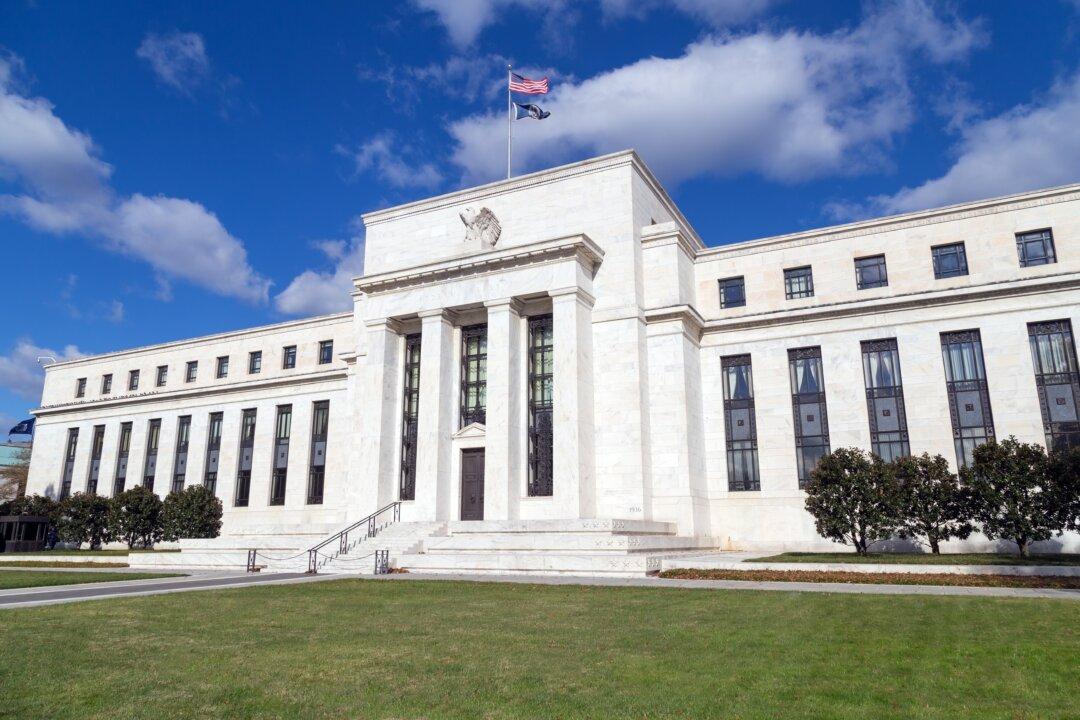The popular movement to question the Fed’s prowess in managing the nation’s money has grown for decades, with countless books and articles and mounting evidence that something has gone very wrong. With the Trump administration’s overt criticisms and even threats to fire the chairman, now dialed back, we have entered a new era.
It is no longer the untouchable subject.
It’s about time.
The Federal Reserve was created in 1913. If you understand American politics and intellectual culture at the time, you can understand the thinking. We’d been through several decades of astonishing economic growth marked by tremendous technological achievements in lighting, transportation, metallurgy, energy, communications, and flight. It all happened at once, and it caused dramatic increases in living standards.
The great question of the day was: Why has all this happened at once? I have my own answers to this question that relate to freedom, trade, and capital accumulation. An easier if less sophisticated explanation, and the one pushed by most respected thinkers, was better engineering backed by science. Engineers and scientists basked in glory as cities rose up into the air, planes flew overhead, and the darkness turned to light.
The prevailing ethos was that the experts could fix anything with enough resources, power, and good plans. So it was for banking. We’d lived through decades of bank failures, business cycles, skewed investing signals, and seeming chaos especially with the Panic of 1907, the event that created the rationale for a new system.
The solution seemed obvious. Bring the best and brightest, the most experienced and the most far-seeing, together in a room and create a central bank like Germany and England. That way we can bring rationality, good engineering, and science to the cause of money, banking, and economic management.
The Fed was born as a quasi-government institution, a public-private partnership, that would invite every bank in the country to be part of its clearing system. The government would grant the monopoly in exchange for the bank’s willingness to guarantee public debt. Then the experts would take charge, managing money creation, interest rates, and business cycles.
Everything looked good on paper. They would favor business stability, keep banks open during a crisis, foster job creation, and keep inflation under control. The architecture of the new system seemed perfect, at once decentralized in states but also centralized in New York and later D.C. What could go wrong?
The fatal flaw was the relationship with the federal government, which was the Fed’s benefactor. It obligated the Fed to swing into action when called upon in exchange for retaining its banking cartel. In effect, government now had a printing press, which is a prescription for disaster. No one said that, but that is exactly what it meant. The Fed would face constant political pressure to keep rates low, keep the financial system liquid, keep bank failures at bay, and effectively fund whatever policies, however crazy, the government had in mind.
Thus came the Fed’s first major job: funding U.S. intervention in the European conflict that came to be called the Great War. The printing presses got busy and made the war possible, not only for the United States but for all the European governments too.
This was the first great central-banking war. With the power to print, government had less incentive to rush to peace and contain the wars. That’s why this war was the first “total war,” meaningful involvement of the civilian populations across many countries and including conscription.
In the aftermath, most currencies were devastated, including the U.S. dollar. It was a sign of things to come. The Fed had said it would keep business cycles at bay and curb inflation. The exact opposite happened, decade after decade. The core reason: whereas the old system served depositors, the new system mainly served the government and itself. Of this there can be no doubt.
The big picture following a century and a dozen years is that the purchasing power of the dollar has been crushed. A dollar in 1913 is worth $0.03 today. Not even the great inflation in Spain in the High Middle Ages reached such levels.

The Fed has abused its power and the government has abused the banking and money system to feed the growth and entrenchment of a Leviathan state.
None of the architects of the Fed itself anticipated such a result. They were accomplished men of finance and banking who were certain that they could do a better job than the exigencies of a decentralized banking system with its periodic crises stemming from bouts of speculative frenzy. In trying to perfect the system, they created a tremendous mess.
The problem is not just inflation but the instability generated by centralized control of interest rates. The business cycle has become more severe since its creation, with effects more profoundly impactful on labor markets.
Before the Fed, hardly anyone really spoke of a problem with structural unemployment because there were always things to do and always people to pay others to do them. After the Fed and especially following 1929, unemployment was added to the chronic conditions of modern economic life.
There is another feature of the Fed that has become obvious since Richard Nixon took the United States off the gold standard and an agreement made the dollar the currency for the world. It became the tool of settlement for all international trade and every government in the world was happy to hold dollar-based assets. Every student of trade can tell you that the country with the strongest currency will always be outgunned as a producer and exporter. All else equal, production will be more advantageous elsewhere.
There is a fix for this, which involves allowing purchasing power to rise domestically and production costs to fall to match those of our trading partners as their cost structure moves in the opposite direction. That’s how accounts are settled.
The Fed did not do this. Instead, it permitted wide abuse of the dollar’s status to keep cranking out the funding for the welfare state and the military machine, with forever debts and deficits piling up and now threatening prosperity in a fundamental way. The number of financial crises is legendary.
Let’s blast forward to the present moment. Trump has distinguished himself as the major statesman in the 21st century to observe what is now very obvious. He has said that the United States cannot thrive long-term as nothing but the debt-laden consumer of China’s production. We need to reclaim our position as a manufacturing nation. Tariffs are the way, he says.
Financial markets have not been warm to his plan. Initially befuddled by the skepticism, he has finally decided that the real problem is the Fed itself. He demanded that it lower interest rates, to which the Fed responded that this is risky. It just conquered a wicked inflationary bout. Why should the country risk yet another with another round of quantitative easing?
Jerome Powell makes some good points, but there is a lack of credibility here. The Fed waited far too long to raise rates the last time—from zero the last time Trump was in office—and now Trump believes they are waiting too long to lower them this time. But let’s ask a more foundational question: why should this be up to the Fed rather than be left to market forces?
Trump’s outlook and demands are worthy of doubt but it seems to be his role in life to raise the question that cries out for answers. Why should the Fed have so much power? What is this codependent relationship between the central bank and the central government? How could it not veer toward corruption and mismanagement? After more than a century of experience, it is time to rethink the great error of its initial creation.







